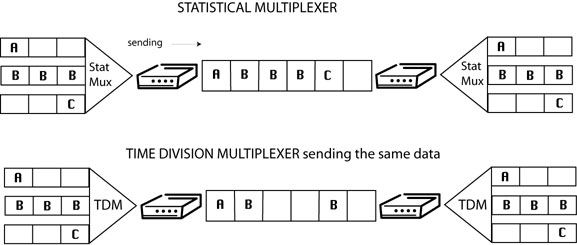Chapter 7 - Data Communications: Market Order 1973-1979
7.4 Wesley Chu and the Statistical Multiplexer 1966-1975
Statistical multiplexing is the third important innovation in the technology trajectory of multiplexing after frequency-division and time-division multiplexing. Chu’s theoretical work in statistical multiplexing began in 1966 after he earned his PhD. in electrical engineering from Stanford University and joined a new computer communications studies group at Bell Labs (AT&T). Created in response to complaints concerning interconnecting terminals and computers over telephone lines, the study group began investigating terminal to computer communications. From traffic measurements, the group learned terminals typically used about 5% of the bandwidth of communication lines, leaving 95% of the bandwidth unused. The question was: How to multiplex the traffic of many terminals over a communication line to most efficiently use the bandwidth of the circuit and thereby reduce communication costs?
Chu’s first thoughts turned to improving time-division multiplexing (TDM). In TDM, each terminal connected to the multiplexer has full use of the communication line on a rotating basis for a dedicated, fixed period of time. While a significant improvement over frequency-division multiplexing, TDM still suffered inefficiencies because terminals in rotation frequently had nothing to transmit. How then to give terminals with data to send control of the communication line? (See Exhibit 6.1 Statistical Multiplexer.) A solution required intelligence – the multiplexer had to determine which terminals had data to send and how to queue the terminals so as to optimally serve all terminals – and storage buffers, and both microprocessors and memory were expensive.
Exhibit 7.4.1 Statistical Multiplexer

In 1969, Chu left Bell Labs to teach at UCLA. While he continued to investigate statistical multiplexing, the prohibitive cost of hardware precluded any immediate practical application. Then in 1971, Intel introduced the 4004 microprocessor. Only it lacked the computational power to perform the logical operations required of statistical multiplexing. When Intel introduced the 8008 in 1972, Chu converted his design to the new eight-bit microprocessor and began experiments using sixty-four terminals as input. Again he found, one chip did not provide the needed computational power, so he redesigned his system using two 8008’s and by 1975 had a working statistical multiplexer supporting sixty-four terminals. Chu filed successful patent applications in 1976 and 1977 covering his statistical multiplexing innovations. As it turns out, neither he nor UCLA ever asserted their rights.